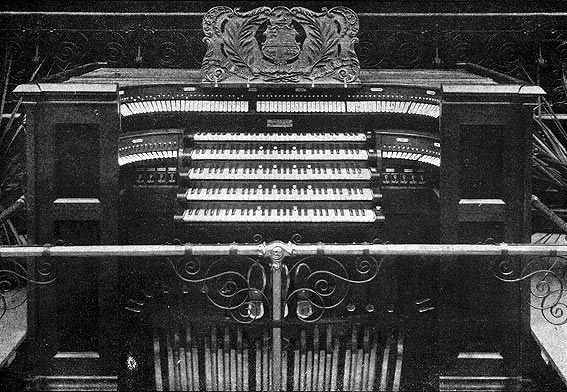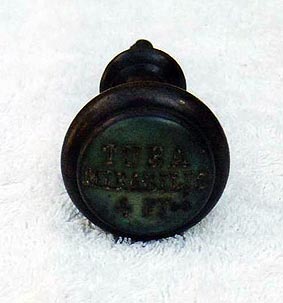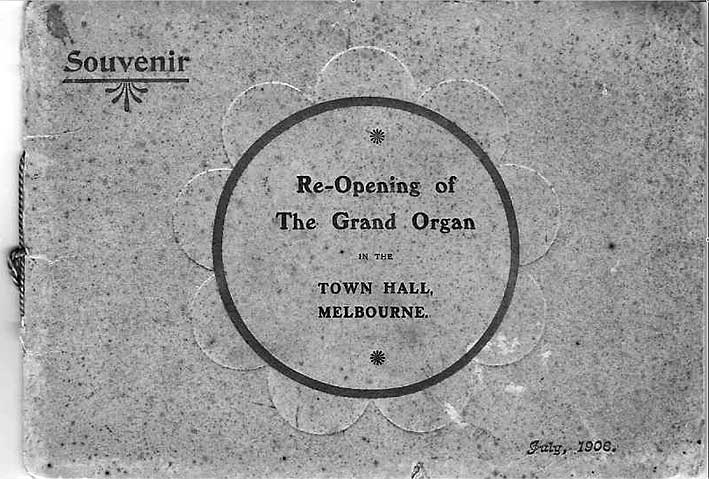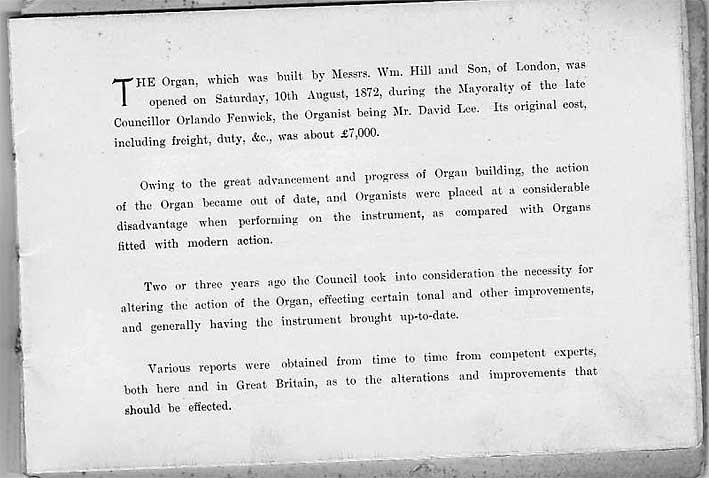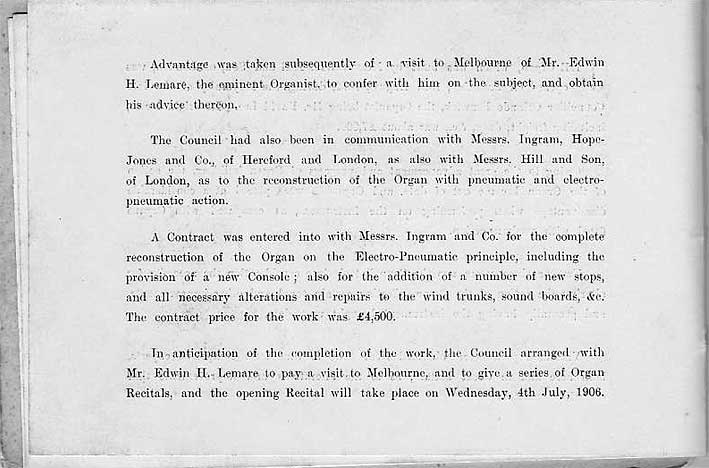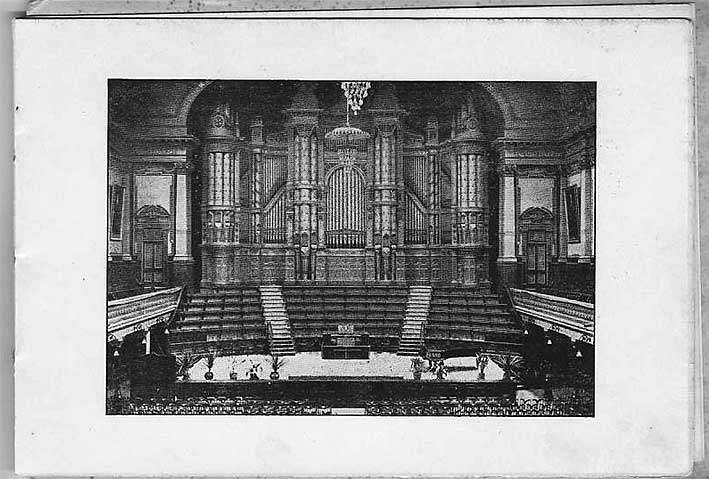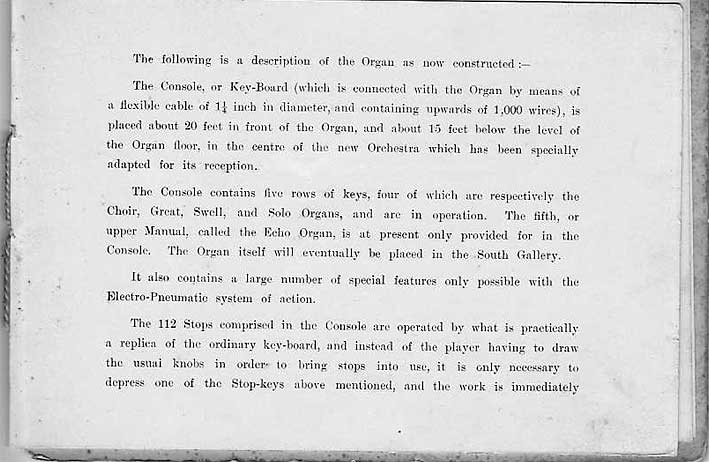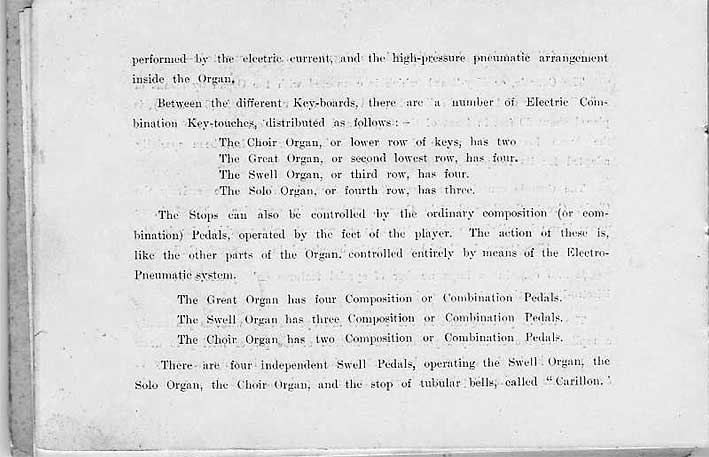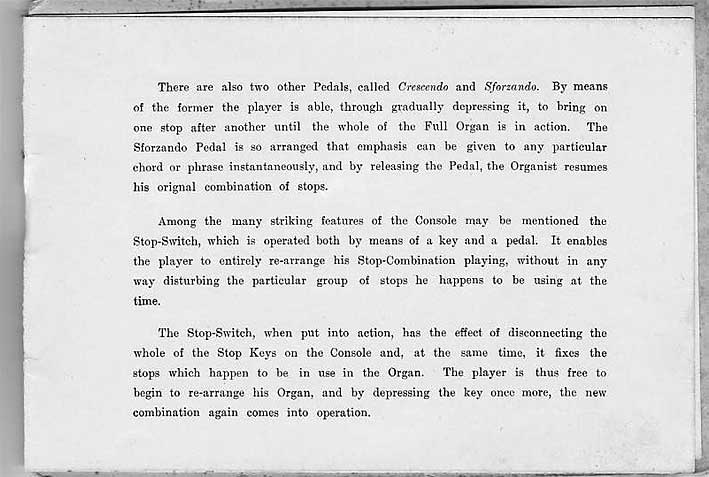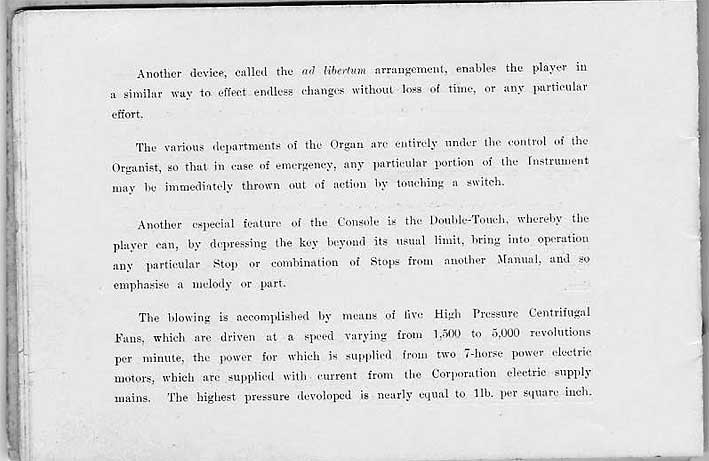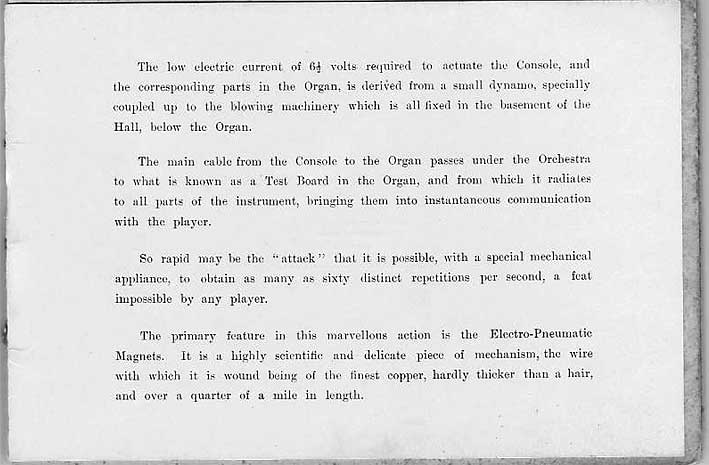MELBOURNE TOWN HALL
The original Town Hall buildings were designed by Melbourne architects Reed & Barnes. The foundation stone was laid in 1867 by Prince Alfred, Duke of Edinburgh, son of Queen Victoria, and the building opened on 9 August 1870, when a small organ of 17 stops by George Fincham was hired for several months.
Hill & Son, of London, were commissioned to build a four-manual grand organ of 66 speaking stops for the Town Hall, which was the last major instrument to be built under the superintendence of William Hill, the founder of the firm. It was completed in the builders' factory in June 1871 and finally opened on 8 August 1872; the total cost was £7,350.[1]
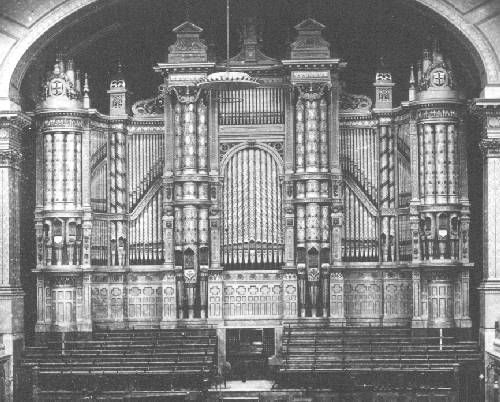
Specification as published in Hopkins & Rimbault, 3rd edition 1877. p. 455
Description of the new organ [opened 1872] for the Town Hall, Melbourne, Australia, by
Messrs. William Hill and Son. Compass of each Manual, CC to C, 61 notes:-
| Great Organ. 01. Double Open Diapason 02. Bourdon 03. Open Diapason 04. Open Diapason 05. Gamba 06. Stopped Diapason 07. Principal 08. Principal 09. Harmonic Flute 10. Twelfth 11. Fifteenth 12. Mixture 13. Mixture 14. Double Trumpet 15. Posaune 16. Trumpet 17. Clarion Choir Organ. 18. Bourdon 19. Salicional 20. Dulciana 21. Gedact 22. Gamba 23. Principal 24. Gemshorn Twelfth 25. Gemshorn Harmonic 26. Dulcian Mixture 27. Clarionet Swell Organ. 28. Bourdon 29. Open Diapason 30. Cone Gamba 31. Pierced Gamba 32. Stopped Diapson 33. Principal 34. Suabe Flute 35. Twelfth 36. Fifteenth 37. Mixture 38. Double Trumpet 39. Cornopean 40. Oboe 41. Clarion Solo Organ. 42. Lieblich Bourdon, 43. Harmonic Flute 44. Vox Angelica 45. Flute Octaviante 46. Piccolo 47. Glockenspiel 48. Bassoon 49. Clarionet 50. Orchestral Oboe 51. Vox Humana 52. Oboe Clarion 53. Tuba Mirabilis 54. Tuba Mirabilis Pedal Organ, Compass CCC to F, 30 notes. 55. Double Open Diapason 56. Open Diapason 57. Open Diapason 58. Bourdon 59. Quint 60. Principal 61. Violon 62. Twelfth 63. Fifteenth 64. Mixture 65. Trombone 66. Clarion Couplers, etc Swell to Great. Swell to Great (Sub-Octave). Swell to Choir. Choir to Great (Sub-Octave). Solo to Great. Solo to Pedal. Choir to Pedal. Great to Pedal. Swell to Pedal. 4 composition Pedals to Great, 3 composition to Swell, 2 composition to Choir, 4 Combination stops to Solo Organ (by hand) Solo Tremulant. Total, 79 stops, and 4373 pipes |
16 16 8 8 8 8 4 4 4 3 2 IV III 16 8 8 4 16 8 8 8 4 4 3 2 II 8 16 8 8 8 8 4 4 3 2 IV 16 8 8 4 16 8 8 4 2 II 16 8 8 8 4 8 4 32 16 16 16 12 8 8 6 4 III 16 8 |
feet feet feet feet feet feet feet feet feet feet feet ranks ranks feet feet feet feet feet feet feet feet feet feet feet feet ranks feet feet feet feet feet feet feet feet feet feet ranks feet feet feet feet feet feet feet feet feet ranks feet feet feet feet feet feet feet feet feet feet feet feet feet feet feet feet ranks feet feet |
(metal treble) (metal treble) tenor c wood bass tenor c II ranks tenor c tenor c tenor c metal metal wood |
Hill & Son quoted on 12 December 1890 for upgrading the console and action to tubular pneumatic, but this was not carried out. Between 1904 and 1906, the instrument was rebuilt by Ingram & Company, of Hereford, in consultation with Edwin Lemare. Electro-pneumatic action was introduced, a detached stopkey console supplied, and most of Hill upperwork replaced with sundry Hope-Jones-inspired tonalities. The instrument had five manuals, 82 speaking stops and 30 couplers, although the echo organ was only prepared-for. It, and the main auditorium, were destroyed by fire on 1 February 1925.
